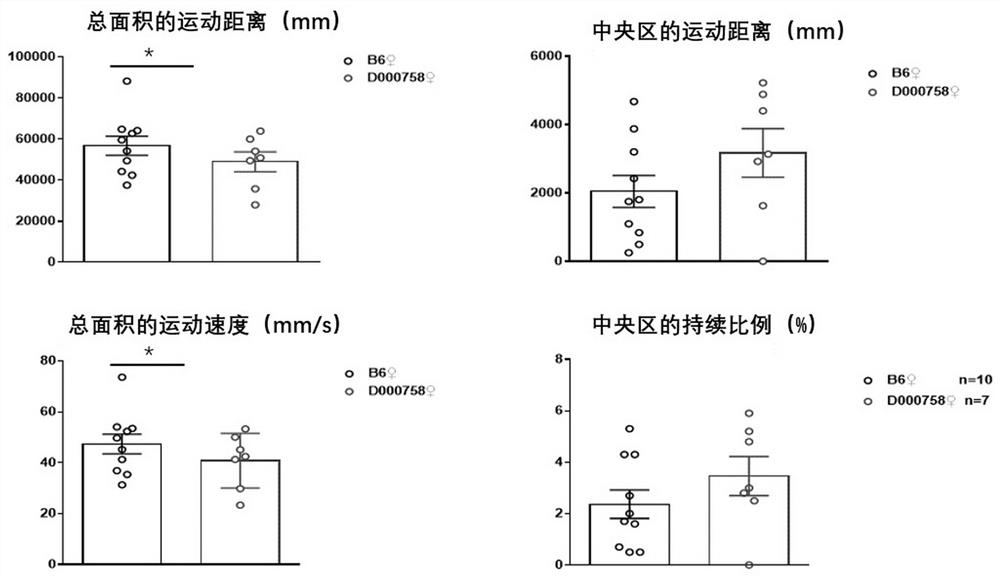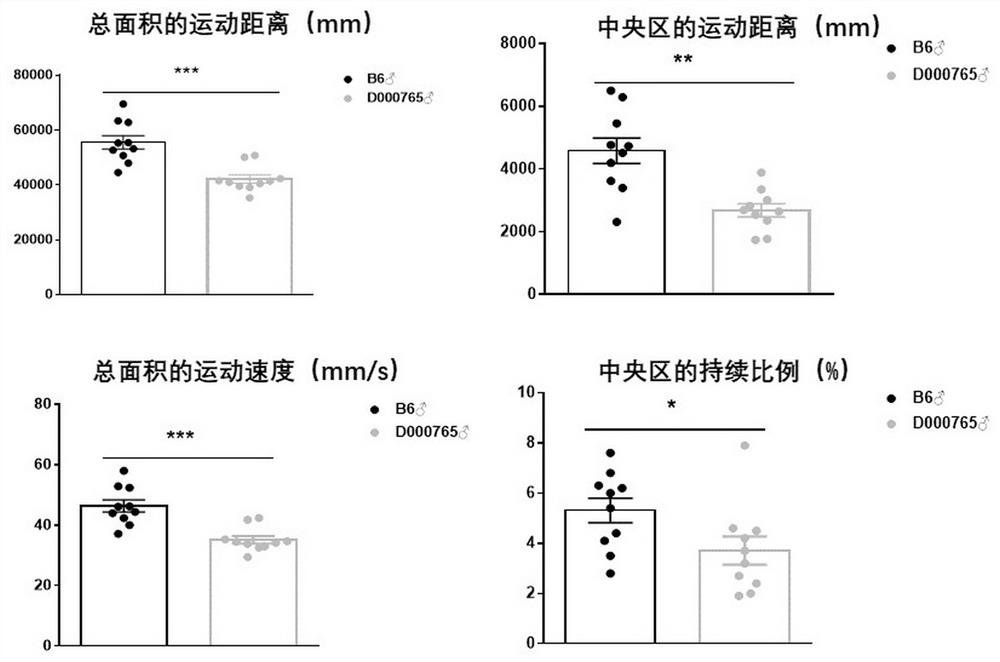Use of Mouse Models in Assessing Intelligence Levels
A mouse model, intelligence technology, applied in the field of biomedicine, to achieve the effect of high memory ability, high learning ability, improved safety and/or efficacy
- Summary
- Abstract
- Description
- Claims
- Application Information
AI Technical Summary
Problems solved by technology
Method used
Image
Examples
Embodiment approach
[0122] 1. A method for constructing a high intelligence level mouse model, said method comprising replacing all or part of the chromosome in the mouse with the chromosome of wild-type mouse origin, thereby making said mouse a high intelligence level mouse .
[0123] 2. The method according to embodiment 1, wherein the wild type mouse is derived from a strain selected from the group consisting of: BLD, CM, DX, FX, HZ, JD, KM, PD, QP, SMX, SY, TW , TZ, YP, YX, ZC, ZZ1 and ZZ2.
[0124] 3. The method according to any one of embodiments 1-2, wherein the mouse is derived from a strain selected from the group consisting of: C57BL / 6J.
[0125] 4. The method of any one of embodiments 1-3, wherein the replacement comprises crossing with the wild type mouse.
[0126] 5. The method according to any one of embodiments 1-4, wherein the replacement comprises means using gene editing.
[0127] 6. The method according to any one of embodiments 1-5, wherein said replacing comprises the step...
Embodiment 1
[0178] Example 1 Mouse preparation and mouse feeding
[0179] Obtain high intelligence level mice (genotype B6 / J-Chr1BLD (jhxiao) / Gpt; or B6 / J-Chr12-ZZ2 (jhxiao) / Gpt) and wild-type mice (gene type) shown in Table 2A and Table 2B type B6 / J), and wild-type mice were used as the control group.
[0180]
[0181]
[0182] Feeding conditions
[0183] The room temperature of the animal is 21-25°C, the humidity is 40%-70%, and the light and dark are alternated for 12 hours.
[0184] Animals were housed in IVC cages or in isolation plastic boxes. Breeding box specifications: length x width x height = 300mm x 190mm x 130 mm, and each box can house up to 5 animals of the same sex.
[0185] The floor of the animal room was disinfected once a day, and 5 different disinfectants were used alternately to avoid microbial resistance. The walls, cages and ceilings were disinfected and wiped at least once a week.
[0186] Animals are free to eat and drink water once a week, and the bott...
Embodiment 2
[0191] Example 2 opening
[0192] experiment procedure:
[0193] 1. Transfer the mouse to the testing room and keep it undisturbed for at least 30 minutes before testing.
[0194] 2. Make sure that the lighting conditions meet the requirements (150-200 lux) and the instrument is operating normally.
[0195] 3. Turn on the computer, turn off the daily lighting in the room, run the video recording software, click the recording button and start timing at the same time, put the mouse into No. 1 at 15s, 30s, 45s, 60s, 75s, 90s, 105s, 120s No. 2, No. 3, No. 4, No. 5, No. 6, No. 7, and No. 8 opening space, ensure that each mouse starts to record data as soon as it is placed, so as to ensure the consistency of the original data; the placement position is one The midpoint of the side edge area faces the direction of the wall, allowing it to freely explore the opening space. After releasing the mice, the experimenter leaves the testing room (out of the sight range of the mice).
[01...
PUM
 Login to View More
Login to View More Abstract
Description
Claims
Application Information
 Login to View More
Login to View More - R&D
- Intellectual Property
- Life Sciences
- Materials
- Tech Scout
- Unparalleled Data Quality
- Higher Quality Content
- 60% Fewer Hallucinations
Browse by: Latest US Patents, China's latest patents, Technical Efficacy Thesaurus, Application Domain, Technology Topic, Popular Technical Reports.
© 2025 PatSnap. All rights reserved.Legal|Privacy policy|Modern Slavery Act Transparency Statement|Sitemap|About US| Contact US: help@patsnap.com



